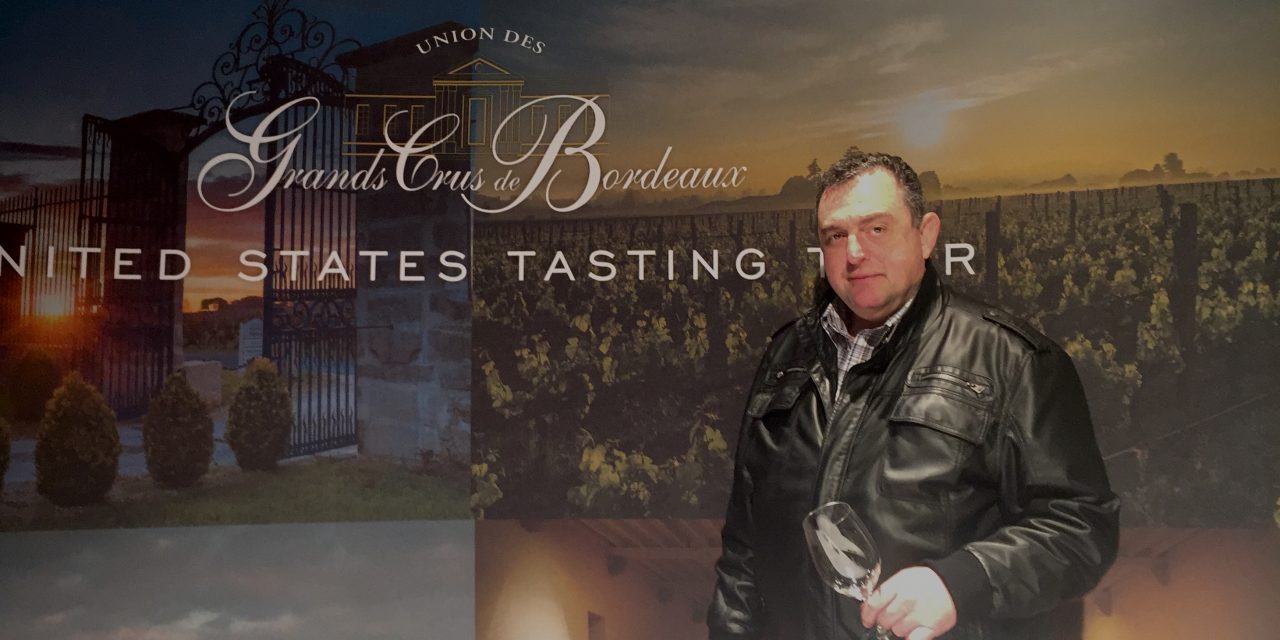Every so often, I have occasion to participate in tasting marathons. They are usually in San Francisco, organized by K&L, a large wine shop. My most recent one, earlier this year, featured 83 Bordeaux labels to be tasted in two hours. It took place in a huge ballroom at the Metreon. There was an abundance of gourmet hors d’oeuvres to go along with the wine.

For wine professionals such events are routine. The tastings I attend however are for the general public, amateurs. They are usually well attended, quite crowded.

Most of us amateurs don’t know how to approach such an event. Indeed, I see many in such tastings who are sloshed in no time. I too had my own hopelessly inebriated experiences before I developed a modus operandi for these events, concluding them sober and informed.

It is difficult to add up how much one is imbibing when receiving multiple small pours. This makes wine tasting dangerously deceptive. Anyone sampling 83 labels in two hours is into a daunting challenge.
Here is the math:
A tasting pace of 1.4 minutes per pour.
A total of 124 oz. of wine consumed. (Assuming an average pour of 1.5 oz. Some are more generous.)
The equivalent of five bottles of wine. (A standard bottle of 750 ml is slightly over 25 oz.)

It does not take a doctor to realize that anyone who swallows five bottles of wine in two hours would die of alcohol poisoning.
No one does. Most do swallow what’s offered. They give up when their body says, “No more!”
Others do what professionals do. They spit.

Nowadays I approach such marathons with a 95% spit policy. I bring my own spit bucket with me, a huge coffee mug.
I also bring with me an attitude and a plan.
I do not aspire to sample everything offered. Two hours is simply too short for that.

I decide what I will taste and in what order, ahead of time. The Bordeaux tasting, organized by a trade group called Union Des Grand Crus De Bordeaux, sets up separate stations, conspicuously labeled, for every major appellation of the region. So for instance, I plan to start with the Right Bank, St. Emillion and Pomerol, then move to the Left and hit Pauillac, St. Estéphe, Margaux and St. Julien. If I will miss any, it’ll be in Graves, a region I don’t quite care as much for.
I know that even if I spit all, my palate will fatigue and from time to time I will have to take breaks. I resist the temptation to eat the wonderful food offered. These are on several tables dispersed around the ballroom. If I chew on anything it’ll be a small piece of bread.
Food is the downfall of professionals and amateurs alike. They crowd around the food tables like packs of dogs, gorging themselves silly. Maybe it’s the munchies. Regardless, there is no quicker way to mess your palate than eat in the middle of a tasting.

With Stephan von Neipperg, owner of Château Canon-la-Gaffelière, St. Emillion.
I don’t necessarily taste every bottle offered in the stations I visit. I go for well known labels or those I am interested in. I avoid the chaff.
I make sure that I close my eyes, ignore the din, and absorb the tasting experience. If I take notes, they are brief. No more than two or three words.

A favorite at the Sauternes table
I reserve around 20 minutes at the end for the Sauternes table. These grand dessert wines taste divine after countless reds that came before. They are the 5% I swallow, my reward for the hard work I just did.
Lately I have been frequenting these marathon tastings with a group of Friday night friends. When we’re done, we all head to a restaurant and have dinner. With several bottles of wine, of course, that I now freely drink.









